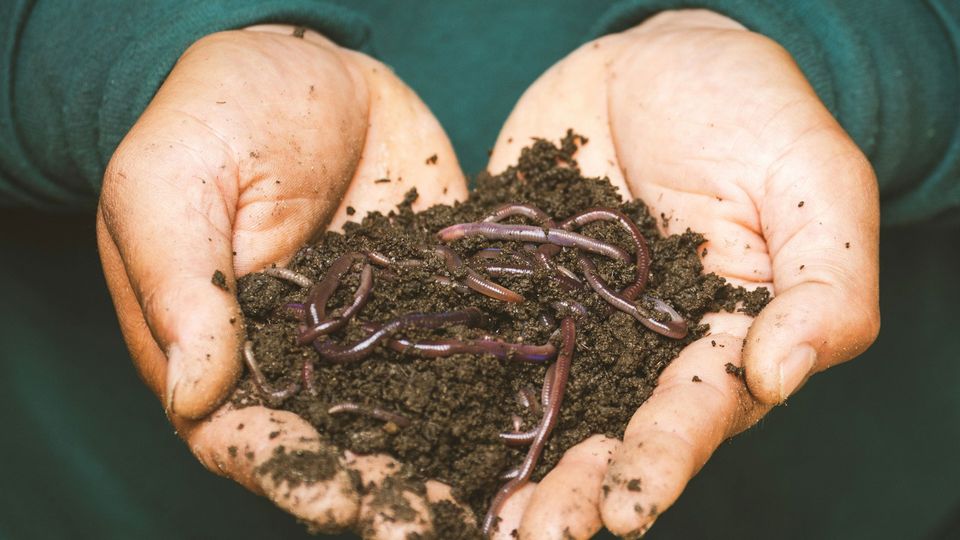Invasive Earthworms Remain an Unknown Ecological Threat
An alien invasion capable of triggering catastrophic changes is underway across North America, in the form of earthworms.

Complete the form below to unlock access to ALL audio articles.
An alien invasion capable of triggering catastrophic changes is underway across North America. At least 70 imported earthworm species have colonized the continent, and represent a largely overlooked threat to native ecosystems, according to a new study by researchers at Stanford University, Sorbonne University, and other institutions. The analysis, published Feb. 8 in Nature Ecology & Evolution, provides the largest ever database of such earthworms and warns of the need to better understand and manage the invaders in our midst.
“Earthworms tell the story of the Anthropocene, the age we live in,” said study senior author Elizabeth Hadly, the Paul S. and Billie Achilles Professor in Environmental Biology in the Stanford School of Humanities and Sciences and professor of Earth system science in the Stanford Doerr School of Sustainability. “It is a story of global homogenization of biodiversity by humans, which often leads to the decline of unique local species and the disruption of native ecosystem processes.”
Friend or foe?
Mostly invisible and largely unappreciated, earthworms are worth their weight in gold to farmers and gardeners because their movement creates tunnels that allow air, water, and nutrients to penetrate, while their waste serves as a rich fertilizer. They also play a central role in many processes that cascade to aboveground communities and the atmosphere. For example, although mechanical movement through the soil by earthworms may initially release carbon dioxide, the longer-term impacts of digesting organic material result in a net increase in sequestered carbon where earthworms are present.
Since the late 1800s, people looking to capitalize on these services have brought earthworms to North America from Asia, Europe, South America, and Africa. In some places, these non-native introductions have successfully enhanced the agricultural economy. However, in other cases, they have been detrimental. These transplants are more likely to consume aboveground leaf litter than native earthworms, altering habitat quality in a way that can hurt native plants, amphibians, and insects.
Want more breaking news?
Subscribe to Technology Networks’ daily newsletter, delivering breaking science news straight to your inbox every day.
Subscribe for FREEAlien earthworms are at a distinct advantage. Unlike the majority of our native species, many female alien earthworm species can produce offspring without fertilization from a male. Additionally, climate change opens new niches for their colonization in northern parts of the continent, where permafrost is melting and which are void of native earthworms.
Understanding alien earthworms’ impacts
Despite all this, only a limited number of studies have documented alien earthworms’ spread, and none have covered colonization dynamics over a large spatial scale or a large number of species.
For their study, the researchers drew on thousands of records from 1891 to 2021 to build a database of native and alien earthworms, then combined it with a second database documenting U.S. border interceptions of alien earthworms between 1945 and 1975. With the aid of machine learning, the team used the combined databases to reconstruct assumed introduction pathways and spread of alien earthworm species.
They found alien earthworm species in 97% of studied soils across North America, with alien occupation higher in the northern part of the continent and lower in the south and west. Overall, aliens represent 23% of the continent’s 308 earthworm species, and account for 12 of the 13 most widespread earthworm species. By comparison, in the U.S. only 8% of fish species, 6% of mammal species, and 2% of insects and arachnids are alien.
In Canada, the proportion of alien earthworms is three times greater than that of native earthworms. Across most of the lower 48 U.S. states and Mexico, there is about one alien earthworm for every two native species.
“These ratios are likely to increase because human activities facilitate the development of alien species that threaten native earthworm species, a phenomenon still largely overlooked,” said study lead author Jérôme Mathieu, an associate professor of ecology at the Sorbonne who did the research while a visiting professor in Hadly’s lab.
Not all alien earthworms will menace native ecosystems. However, their large distribution and unknown impact on a range of native ecosystems, such as grasslands and conifer forests, makes them worth serious attention, according to the researchers. Among other solutions, they suggest policymakers focus on prevention, such as encouraging the use of native worms for composting and fishing bait, and early detection through regular monitoring and citizen science.
By raising awareness of the mostly unknown dynamics of introduction of alien earthworms in North America, this study highlights vital roles they play in structuring ecosystems and affecting their function in our human-dominated landscapes.
“This is most likely the tip of the iceberg,” said study co-author John Warren Reynolds of the Oligochaetology Laboratory and the New Brunswick Museum in Canada. “Many other soil organisms may have been introduced, but we know very little about their impacts.”
Reference: Mathieu J, Reynolds JW, Fragoso C, Hadly E. Multiple invasion routes have led to the pervasive introduction of earthworms in North America. Nat Ecol Evol. 2024. doi: 10.1038/s41559-023-02310-7
This article has been republished from the following materials. Note: material may have been edited for length and content. For further information, please contact the cited source.

